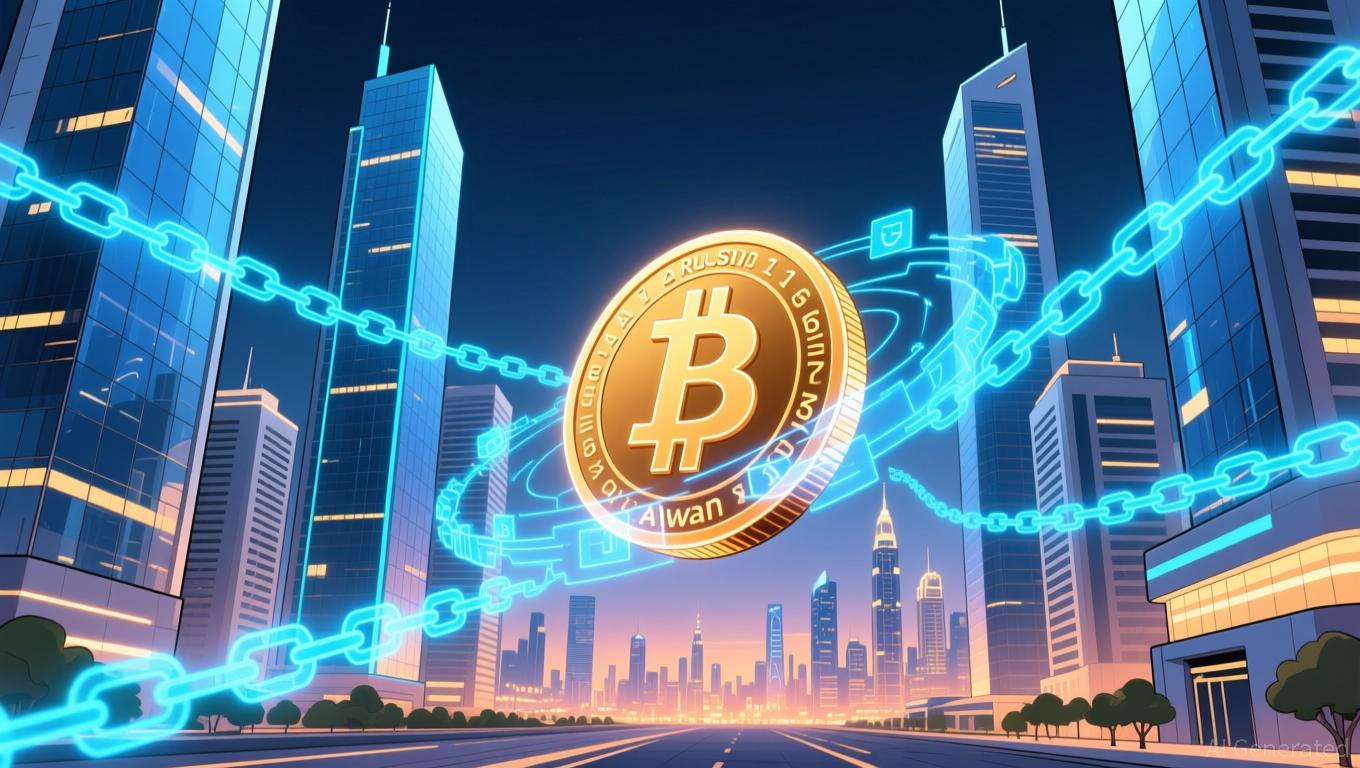XRP Ledger Adoption Highlights Ripple’s Vision for Global Finance
Quick Take Summary is AI generated, newsroom reviewed. Ripple CEO Brad Garlinghouse says XRP Ledger could process 14% of SWIFT transactions. XRPL may handle $654 trillion in global value in the future. Faster, cheaper, and more transparent cross-border payments are possible. Adoption by banks and businesses could drive demand and XRP’s value.References RIPPLE CEO BRAD GARLINGHOUSE CONFIRMS THE #XRP LEDGER IS SET TO HANDLE 14% OF SWIFT'S GLOBAL TRANSACTIONS! THAT COULD TRANSLATE TO OVER $100 PER XRP!
Ripple CEO Brad Garlinghouse made big news at a recent event. He said the XRP Ledger (XRPL) could soon handle 14% of SWIFT’s global transactions, as shared by JackTheRippler. This is a huge step for cross-border payments and could change the way money moves around the world.
🚨RIPPLE CEO BRAD GARLINGHOUSE CONFIRMS THE #XRP LEDGER IS SET TO HANDLE 14% OF SWIFT’S GLOBAL TRANSACTIONS! THAT COULD TRANSLATE TO OVER $100 PER XRP!
— JackTheRippler ©️ (@RippleXrpie) October 11, 2025
THE XRP LEDGER NOW STANDS AT THE EDGE OF A MULTI-TRILLION-DOLLAR REVOLUTION, WITH AN ESTIMATED $654.39 TRILLION IN GLOBAL VALUE… pic.twitter.com/UWdS5QThnZ
Garlinghouse explained that SWIFT has long been the main system for banks. But the XRP Ledger offers a faster and cheaper alternative. He said that it can settle transactions in seconds, while SWIFT usually takes hours or days. This speed could save banks a lot of time and money.
A $654 Trillion Opportunity
The XRP Ledger is not just faster. Garlinghouse also estimated that $654.39 trillion in value could flow through XRPL in the future. This number includes payments, settlements and even other global transactions.
If even a small part of that value moves through XRPL, it could have a big impact on the cryptocurrency. Some analysts say this could raise XRP’s price greatly, maybe over $100 per coin. This shows how financial adoption can affect digital assets.
How This Could Change Finance
XRP Ledger adoption could make cross-border payments simpler. Banks could avoid long delays and high fees and transactions would be more transparent and easier to track.
Furthermore, XRPL’s ledger is decentralized, meaning no single company controls it. It also allows tokenization of real-world assets. Basically, this could help banks and companies move money or assets in new ways.
Garlinghouse said Ripple is working with financial institutions to explore these possibilities. Many banks are already testing XRPL for real transactions. This shows growing trust in blockchain technology.
What It Means for Investors
For crypto investors, this news is exciting, because if XRPL handles even part of SWIFT’s volume, demand for XRP could rise. Increased adoption usually leads to higher liquidity and value.
However, there are still some challenges. Wider adoption depends on regulatory approval and technical integration with banks. Also, cryptocurrencies remain volatile, so prices can move quickly.
Despite this, Ripple’s plan signals a strong future for XRP. Investors and traders are watching closely to see how it all unfolds.
How XRPL Could Transform Finance
Ripple is setting up XRP Ledger as a major player in global finance. If Garlinghouse’s predictions are correct, XRPL could handle billions of dollars in daily transactions and could change cross-border payments forever. Banks and businesses will need to test and adopt XRPL systems, meanwhile investors will track its adoption and price.
One thing is pretty clear, that Ripple is aiming high with this XRP Ledger adoption. XRP Ledger is at the edge of a potential multi-trillion-dollar revolution. And as more value moves through XRPL, the world will see how digital payments can reshape global finance.
Disclaimer: The content of this article solely reflects the author's opinion and does not represent the platform in any capacity. This article is not intended to serve as a reference for making investment decisions.
You may also like
Solana News Update: Institutional Investments Boost Solana Despite Security Concerns and Negative Market Trends
- Analysts predict Solana (SOL) will likely stay below $150 due to bear flag patterns and weak momentum, with key support at $140 potentially triggering a 30% drop to $99 if breached. - Despite technical headwinds, Solana's ETF inflows ($531M in first week) outpace Bitcoin and Ethereum , driven by 7% staking yields and lower fees compared to Bitcoin's $900M outflows. - Security risks persist after Upbit halted Solana withdrawals following a $37M hack, exposing vulnerabilities in hot wallet storage while CM

XRP News Today: ADGM's Green Light for RLUSD Strengthens UAE's Position as a Crypto Pioneer
- Ripple's RLUSD stablecoin gains ADGM approval as a fiat-referenced token, enabling regulated use in cross-border payments and lending. - The $1.2B market cap stablecoin emphasizes transparency with 1:1 USD reserves and third-party audits, aligning with UAE's crypto-friendly regulatory framework. - ADGM's endorsement strengthens RLUSD's institutional adoption in the Middle East, where tokenized settlement systems outpace Western markets. - Ripple's partnerships with UAE and African banks position RLUSD as

Why SOL's Steep 150% Decline Demands a Serious Rethink of Alt-Chain Investments
- Solana's 2025 150% price drop exposed alt-chain risks from token unlocks, declining network activity, and market turbulence. - The collapse highlighted systemic vulnerabilities in crypto portfolios, urging diversified allocations to Bitcoin , stablecoins, and high-quality altcoins. - Technical analysis showed SOL trading below key moving averages, with bearish signals and projected price ranges reflecting market uncertainty. - Institutional frameworks like CORM and annual rebalancing strategies emerged a

Solana Update: Bearish Pattern and Weakening Support Point to Solana's $99 Challenge
- Solana's SOL price faces bearish pressure, with technical indicators and on-chain metrics suggesting a potential drop to $99 if key support levels fail. - ETF inflows remain uneven, with Bitwise's BSOL ETF dominating 89% of assets but recent outflows signaling institutional caution amid weak retail demand. - The Upbit hot wallet breach triggered liquidity disruptions, while Nansen data shows 20% monthly declines in TVL, active addresses, and network fees. - Technical analysis highlights a bear flag patte

